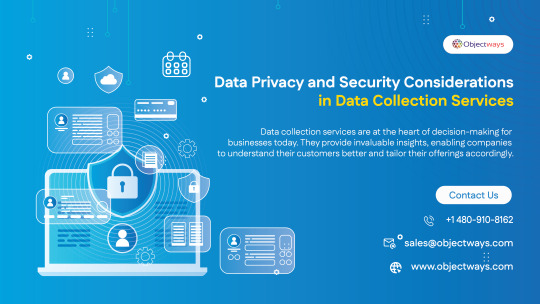#Data sources
Explore tagged Tumblr posts
Text
HR Analytics: Smarter Decisions Backed by Data
Explore how HR Analytics is reshaping recruitment, engagement & retention through real-time insights & smarter HR decision-making.
0 notes
Text
🚀 Exciting news! Google has launched Gemini 2.0 and AI Mode, transforming how we search. Get ready for faster, smarter responses to complex queries! Explore the future of AI in search today! #GoogleAI #Gemini2 #AIMode #SearchInnovation
#accessibility features.#advanced mathematics#advanced reasoning#AI Mode#AI Overviews#AI Premium#AI Technology#AI-driven responses#coding assistance#data sources#digital marketing#fact-checking#Gemini 2.0#Google AI#Google One#image input#information synthesis#Knowledge Graph#multimodal search#Query Fan-Out#response accuracy#search algorithms#search enhancement#search innovation#text interaction#User Engagement#voice interaction
0 notes
Text
Data sources (not completed)
(1) Factory worker payroll (not yet completed code change) (2) Hand workers' salaries (haven't found the data yet) (3) Luxury brand financial reports (don't know how to grab the data)
0 notes
Text

In today's competitive business landscape, data sourcing is crucial for project success. Trust the experts at Data Sourcing Services to provide reliable and efficient data sourcing solutions for all your audio, image, video, and document needs. Contact us now and take your business to the next level.
To accelerate your business with Objectways Reach out to us at [email protected] and visit us at www.Objectways.com
Trust the experts at Data Sourcing Services
#datasourcing#data sources#datalabeling#dataannotationservices#datalabelingservices#dataannotation#generative ai#content moderation#datacollectionservices#nlp#natural language processing
0 notes
Text
Alternative Data Market: Social Media Analytics Empowering Investor Decision-Making
The alternative data market has emerged as a significant force in the data analysis landscape, offering a wide range of innovative and non-traditional data sources that can be leveraged to gain a competitive edge in various industries. The market is expected to continue its rapid growth trajectory, driven by the increasing demand for alternative data from various sectors, including finance, healthcare, and marketing.
For instance, the world of finance is built on information. But what if the most valuable insights lie outside the traditional financial statements and news reports? This is where the alternative data market steps in.
What is Alternative Data?
Alternative data refer to unconventional sources of information used to gain a deeper understanding of markets and companies. Unlike traditional data companies have relied on for years, alternative data come from sources such as social media, satellite imagery, credit card transactions, and web scraping. When analyzed, this data can provide unique insights that traditional sources may miss.
Why is Alternative Data Important?
The importance of alternative data lies in its ability to provide insights that traditional data cannot. For instance, analyzing credit card transactions can reveal consumer spending habits. In contrast, social media data can provide real-time sentiment analysis. Here are some insights that can give businesses a competitive edge.
Social Media Sentiment: Analyzing public mood on platforms like Twitter can reveal consumer trends and brand perception.
Satellite Imagery: Tracking changes in shipping activity or factory car park occupancy can hint at production levels.
Web Traffic Data: Sudden spikes in visits to a company's careers page might suggest upcoming expansion plans.
Credit Card Transactions: Consumer spending patterns can explain economic health and sectoral performance.
Gather more insights about the market drivers, restrains and growth of the Global Alternative Data Market
Visiting the Market on Rise and its Growth Factors
The alternative data market has seen exponential growth in recent years. As businesses realize the potential of alternative data, they are investing heavily in this sector. According to recent research, the market is expected to grow at an impressive compound annual growth rate of 50.6% from 2024 to 2030. This market is a diverse ecosystem driven by several key factors. Listed below are some of the reasons why the market is booming:
Growing Demand for Data-Driven Decision-Making: Industries worldwide increasingly rely on data-driven insights to make informed decisions, leading to a surge in the adoption of alternative data.
Limited Value in Traditional Data: Traditional financial data, such as stock prices, may have limited value due to their widespread availability, making alternative data sources more appealing for gaining unique perspectives.
Rise of Big Data and Analytics: The rise of big data technologies has facilitated the collection, storage, and analysis of large volumes of unconventional data sources.
Demand for Alpha: In a competitive market environment, investors constantly seek ways to gain a competitive edge. Alternative data provide a means to uncover hidden insights that can lead to alpha generation.

Challenges in the Alternative Data Market
Despite its potential, the alternative data market faces several challenges. Data privacy is a major concern, as much of this data involves personal information. In addition, the sheer volume of data can be overwhelming, requiring sophisticated tools and techniques for analysis.
The Future of the Alternative Data
As technology continues to evolve, more innovative data sources can be expected to emerge. Businesses that can effectively harness the power of alternative data will be well-positioned to lead in the digital age. Here are some exciting possibilities:
Internet of Things (IoT) Data: Sensor data from connected devices could reveal real-time insights into production lines or consumer behavior.
Advancements in AI and Machine Learning: Technological progress in AI and machine learning is enhancing data analytics capabilities, enabling better utilization of alternative data for decision-making.
Satellite Imagery with AI Analysis: Advanced algorithms could unlock even richer insights from satellite images.
Social Listening Tools: Going beyond sentiment analysis, AI could identify emerging trends and potential disruptions based on social media conversations.
Conclusion
In conclusion, the alternative data market is an exciting frontier in the digital landscape. In the vast expanse of the digital universe, non-traditional alternative data have been steadily gaining traction in the market, revolutionizing how businesses operate and make decisions. As one explores this vast expanse, it is clear that alternative data are not just an alternative anymore; it’s becoming the norm. And those who can navigate this terrain will be the future trailblazers.
Stay tuned for more insights into this fascinating world!
#Alternative Data Market#Alternative Data Industry#Alternative Data Market Size#Alternative Data Market Growth#Alternative Data Industry Analysis#Alternative Data Market Trends#Alternative Data Market Share#Alternative Data#data sources#investment applications#consumer insights#supply chain analytics#financial services#unstructured data
0 notes
Text
Where can businesses find reliable data for audience segmentation?
Sources Businesses Find Reliable Data for Audience Segmentation:
Businesses can find reliable data for audience segmentation from various sources, ensuring accuracy and relevance for targeted marketing efforts.
Some key sources include:
1. Zero-Party Data:
Data that is intentionally and proactively shared by customers with businesses, enables them to personalize their marketing strategies more effectively. Also, refer to email marketing data.
2. First-Party Data:
Data obtained directly from customer interactions on websites and sales channels. Provides authentic insights into customer behavior and preferences.
Refer also to Google Analytics, Google Search Console, and other marketing analytics platforms.
3. Surveys and Interviews:
Gather accurate, basic information about audience interests and behaviors. Offers insights directly from the audience, helping to understand their needs and motivations.
4. Behavioral Data:
This presents the behavior of the audience, including their actions on websites. Provides valuable insights into audience engagement and preferences. Heat maps can come to the rescue.
5. Social Media Platforms:
This delivers information about audience interactions, such as likes, shares, saves, and comments.
Offers insights into the social engagement patterns of the audience and the type of content that is most engaging.
6. Salespeople Interactions:
This provides firsthand insights into customer preferences, objections, behaviors, and needs, which can be valuable for refining audience segmentation strategies.
7. Customer Service Calls and Feedback:
This offers direct feedback and firsthand information about customer preferences, needs, concerns, and behaviors.
This helps in understanding customer segments and tailoring marketing strategies to better meet their needs.

Image Content Source - LinkedIn Ads Privacy Playbook
In summary, by leveraging these diverse sources, businesses can gather comprehensive and reliable data for audience segmentation, enabling them to tailor their marketing strategies effectively.
Here's related information that you may also find helpful – Marketing Automation Statistics [Accelerate Efficiency and Sales].
#data sources#digital marketing#zero party data#first party data#audience segmentation#marketing analytics
0 notes
Text
Seamless Connectivity: Unleashing Efficiency with Enterprise Integration Services
Elevate your business's operational prowess with our cutting-edge Enterprise Integration Services. We seamlessly unite disparate systems, applications, and processes, fostering real-time collaboration, data accuracy, and streamlined workflows. Experience heightened efficiency and agility as your enterprise embraces a new era of interconnected excellence.

#Enterprise integration services#data sources#integration solutions#data exchange#integrating services#integration scenarios#enterprise integration patterns#business process
0 notes
Text
Primary Research vs Secondary Research: Definitions, Differences, and Examples
Both primary and secondary research holds a significant place in the researcher’s toolkit. Primary research facilitates the collection of fresh, original data, while secondary research leverages existing information to provide context and insights.
#Academic research#Advantages#Analysis#Case studies#Comparative research#data analysis#data collection#Data sources#Definitions#Differences#Disadvantages#Examples#Information sources#Literature review#market xcel#primary data#primary research#qualitative research#Quantitative research#Research comparison#Research design#Research examples#research methodology#Research methods#Research process#research techniques#Research tools#Research types#Secondary data#Secondary research
0 notes
Text
I think it is very cool how tech companies, schools, employers, and universities make it actively difficult to distance yourself from Google, Microsoft, and Apple.
Yes most Linux distros are very stable, way more secure, privacy friendly, and way more customizable. But every institution is built to make technological independence as difficult as possible.
Yelling on the internet that everyone should switch to Linux and FOSS really ignores how much of the technological world is designed to not let that happen.
#yes switch to linux if you can#Data privacy and security needs to be addressed on a much larger legal scale#you cant consume your way out of this my friends#opensuse#linux#open source#data privacy
723 notes
·
View notes
Text
EVERYONE SHUT THE FUCK UP AND READ THIS.
THE CURRENT VOTE COUNT IS NOT THE FINAL RESULT.
IT WILL TAKE SEVERAL DAYS TO COUNT ALL OF THE VOTES AND DETERMINE WHO WINS THE ELECTION (POSSIBLY MORE IF A RECOUNT IS NECESSARY).
IT IS VERY LIKELY THAT THE FINAL RESULTS WILL NOT LOOK LIKE THE INITIAL RESULTS.
STOP DOOMPOSTING AND LEARN HOW THIS SHIT WORKS.
#scary crane rambles#not fandom#let's get serious#us politics#american politics#us election#election night#election 2024#2024 election#kamala harris#donald trump#2024 presidential election#2024 presidential race#voting#us election 2024#it's also highly likely that trump is cheating to make it look like he's won#i've heard from several sources that he prevented certain journalists from accessing election data#most of which were left-leaning or liberal#and i dont think i've ever seen states being called so quickly in any other election#tldr i think trump tried to rush things and is desperately hoping that no one actually bothers to count the votes now#because if they do then it'll be super obvious that he tried to interfere
586 notes
·
View notes
Text
How AI Is Reshaping M&A Strategy Amid Trade Tensions and Global Volatility
New Post has been published on https://thedigitalinsider.com/how-ai-is-reshaping-ma-strategy-amid-trade-tensions-and-global-volatility/
How AI Is Reshaping M&A Strategy Amid Trade Tensions and Global Volatility


As we head into summer 2025, mergers and acquisitions (M&A) stands at a crossroads. Geopolitical tensions, economic headwinds, and rapid advances in technology are forcing dealmakers to rethink how they source, structure, and close transactions. Trade policy is emerging as a major variable. Unpredictable tariffs, shifting alliances, and growing regulatory scrutiny have pushed global deal activity into more cautious territory. Yet amid the uncertainty, artificial intelligence is coming into focus.
AI is no longer a futuristic add-on. It’s becoming central to the way companies approach M&A. In a climate where speed, precision, and risk management matter more than ever, AI is giving dealmakers a critical edge. It helps surface opportunities faster, pressure-test assumptions, and spot risks early, before they derail a transaction. AI isn’t just making M&A faster. It’s making it smarter.
Trade Uncertainty Is Reshaping M&A Strategy
Changing US trade policies are stalling cross-border deals and making future revenue streams harder to predict. As a result, dealmakers face a two-sided challenge: how to keep deal momentum alive while insulating portfolios from geopolitical shocks.
Some of the effects are already evident on Datasite, which handles over 19,000 new deals a year. New deal kickoffs, especially asset sales and mergers, are up 4% globally in the first four months of this year compared to the same time a year ago. Since these are deals at inception before they are announced, it can provide a good sense of what’s to come and some of the momentum that has already occurred.
Yet there’s caution, too. Deal completion rates on Datasite sank to 44% after the first major US tariff announcement on April 2, ��down from 49% year-over-year (YoY). This means buyers are slowing down. They want more time to evaluate risks. They’re asking more questions. They’re probing the fine print, and if necessary, they are walking away.
A key reason is tariffs. When tariffs are imposed on imported goods or raw materials, they can directly impact the cost structures and profit margins of target companies, especially those with global supply chains. This creates volatility in financial projections, which complicates valuation models and discourages dealmaking. Buyers face added risk as they try to assess whether a target’s current revenue performance can be sustained under changing trade conditions. In many cases, tariffs prompt companies to reconsider expansion into or acquisition within certain countries, shifting M&A activity toward regions with more stable trade relationships.
Additionally, ongoing trade tensions, such as those between the US and China, have led to increased regulatory scrutiny, which further delays or derails deals. These combined factors force dealmakers to spend more time conducting due diligence, modeling various tariff scenarios, and adding protective clauses to deal structures. This then makes the M&A process more complex and costly.
Tariffs are not just increasing operational expenses, they are also reshaping strategic planning by making it more difficult to forecast long-term growth, return on investment, and integration outcomes in cross-border transactions.
Risk models now routinely factor in tariff exposure. Buyers are looking not just at what a target company earns today, but how future trade policy could affect that cash flow. Some deals, particularly cross-border ones, are being paused or restructured entirely as the investment math shifts.
To stay competitive, dealmakers must adapt. That means embracing better tools, faster workflows, and more rigorous diligence. It also means building flexibility into the deal process to account for economic swings.
AI Streamlines Diligence and Strengthens Risk Controls
This is where AI is stepping in. It’s helping deal teams process more information in less time and with greater accuracy. Due diligence is a critical but resource-intensive process that traditionally involves manually reviewing large volumes of documents and information. This approach can be time-consuming and laborious, often placing significant strain on professionals, especially when working under tight deadlines. As a result, the quality and thoroughness of the review may be compromised. AI offers a solution to this challenge by enabling faster and more efficient analysis. AI tools can quickly sort, summarize, and highlight key clauses and relevant obligations within documents, allowing dealmakers to focus on the most important information. This not only improves accuracy but also significantly reduces the time required to complete the due diligence process. For example, AI can organize, categorize and flag key data and risks across thousands of documents in a virtual data room in real time, helping to reduce human error and ensuring compliance with regulatory requirements.
It’s no surprise that one in five dealmakers now use generative AI in the M&A process, while many more say AI adoption is their top operational priority this year. Why? Because the M&A playbook is changing. Reviews are more intense. Regulators ask more questions. Investors demand deeper insight. AI helps answer the call.
Virtual data rooms are also evolving. It’s now common for deal teams to use AI-powered Q&A tools to interrogate information before making a move. In fact, the use of Q&A tools on Datasite has climbed since the start of the year, reflecting an increased need for sellers to be ready to respond quickly and thoroughly to buyers who want to see clean, complete data.
Additionally, AI is increasingly playing a valuable role in identifying potential acquisition targets. By analyzing various market signals, such as company descriptions, geographic compatibility, and size-related criteria, AI can help buyers pinpoint suitable candidates more efficiently. These insights are often derived from a combination of public, private, and proprietary data sources. As a result, some AI-powered platforms are already enabling dealmakers to discover potential targets more quickly and accurately. This proactive approach can improve strategic alignment, making it easier for companies to integrate new capabilities post-acquisition and achieve the growth objectives intended by the deal.
AI can also contribute to the valuation process by offering data-driven analyses based on historical trends and current market conditions. It can also automate routine and labor-intensive tasks, such as redacting sensitive information in documents. By streamlining these operational steps, AI allows professionals to focus more on high-level strategy and innovative thinking, ultimately improving the quality and effectiveness of decision-making throughout the M&A lifecycle.
Dealmakers Must Shift from Reactive to Proactive
In today’s environment, waiting for the perfect moment to launch a deal isn’t a strategy, it’s a liability. Timing matters, but preparation matters more. Those who succeed in this market will be the ones who invest early in deal readiness. That can include cleaning up financials, mapping supply chain dependencies, reviewing IP portfolios, and aligning management on deal terms.
Of course, AI alone isn’t the answer. The best strategies combine human insight with machine intelligence. Use AI to surface options. Use your team to make the calls. Technology should guide the process, not replace judgment.
The Future of M&A Is Here
M&A will always carry risk. But how to manage that risk is changing. AI is raising the bar. It’s giving dealmakers the tools to work faster, smarter, and with more foresight.
In a world where tariffs will likely continue to evolve, and regulators can shift course mid-review, speed and insight matter. The future belongs to dealmakers that are data-driven, tech-forward, and strategically agile.
#000#2025#acquisition#acquisitions#ADD#add-on#adoption#agile#ai#AI adoption#ai tools#AI-powered#amp#analyses#Analysis#approach#artificial#Artificial Intelligence#border#Building#challenge#China#climate#Companies#compliance#course#data#data sources#data-driven#datasite
0 notes
Note
I just want to clarify that this is a good faith question as I am not Jewish and I don’t have a great grasp on what sources may pass the sniff these on this but. What are the issues with Jewish Voice for Peace? I don’t know a lot about the org.
Thanks for asking! I’m not the best source but I can give you a few outline ideas. TLDR? Huge race faking assholes. Real prices of white washing terrorism shit. It’s actually fun to learn about because they really twist and lie about us and it’s a really good opportunity to learn what is and isn’t true. Obviously Jews and Israel isn’t perfect so you often have to check the more plausible claims but even those are usually wildly wrong and exaggerated. It’s tough.
We hate JVP because:
Almost no Jews in it yet they constantly say they represent Jews and token themselves to excuse other hate group’s antisemitism and calls for violence. They are deeply antisemitic and promote misinformation and violence against Jews themselves tho so don’t think they are just a shield. The Jews in it are either totally disconnected from Judaism, both religious and cultural (they promote self conversion to Judaism using a tea cup baptism type thing and various pagan rituals both of which are an ABSOLUTE no go in all forms of Judaism. They don’t publish their membership so it’s impossible to know how many actual Jews are in it) or they are this one insane antizionist religious sect that dress like Orthodox Jews but are basically the most fringe racist pieces of shit antizionists alive who think all other Jews aren’t Jewish enough and deserve to be killed with all the non Jews (they are also just racist against non Jews and Jews that aren’t in their sect as well as homophobic I believe.)
They are as much an anti Jewish hate group as something like the black Hebrew Israelites and Jews for Jesus.
Jews have a hard time with fake Jewish organizations because antisemites and philosemites outnumber us by probably 10 to one. And they don’t even try to learn from us they just put a Jew sticker on their Christian or Muslim bs and say all actual jews should be killed for eating babies.
Here’s some screenshots from the article I linked. I’m too tired to copy paste and format it.




They also rewrite and promote interpretations of holidays that are Jewish to ignore Jewish history and beliefs and replace it with Palestinians. They object to Jews praying or speaking in Hebrew as offensive to Arabs, and in general they are some real assholes to Jews. They token themselves as Jews even when they aren’t. “Not in our name” t shirts that leftist non Jews wear while pretending to be Jewish for the photo opportunity? That’s partially them.
See this photo? Literally no Jew could have been involved in this. Literally no one who knows how to google the word “Passover” could have made this. The Hebrew is backward, like…. It’s literally wrong in every way. Not even in an “we changed it to fit Palestine culture” it’s just stoner bullshit. Just a big ol plate of blood libel and inciting terrorism against real Jews.

Other people have more info. All this is off the top of my head but don’t listen to these fucks unless the info is verified by a Jewish source or you might end up thinking Hebrew is written left to right, bar mitzfas are colonial settler oppression, a bris is cp, and Dino is the real historical language of Jews … who flew down from space just in time to get slightly murdered by a very few fringe groups in 1930s Europe.
#jumblr#antisemitism#leftist antisemitism#please correct me if i'm wrong#I’m unpacking from a move out of nyc#jvp#fuck jvp#I’m so tired.#anyone have the sources? I’m fighting for my life with no internet access and just my phone on data
209 notes
·
View notes
Text

514 notes
·
View notes
Text
i feel like we as a community don't dwell on the fact that data drinks lube often enough. does he take it like a shooter for maximum efficiency? does he mix it into a silly cocktail with a little umbrella and sip it with a straw to be social? i think about it constantly
#source: he mentions this in 3x13 Deja Q at about the 18 minute mark#the next generation#star trek#data soong#rambles#star trek: tng#deja q#tng: 3x13#my posts
219 notes
·
View notes
Text

0 notes
Text



the way he sniffs things is so catlike
#rambles#data soong#i am uncertain the source is actually the initial source of the gifs#cat autism....
99 notes
·
View notes